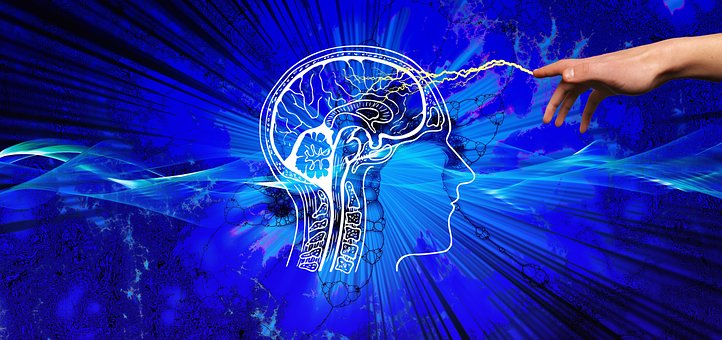ORIGIN OF LIFE FROM THE PERSPECTIVE OF INFORMATI / Herkunft des Lebens aus der Sicht der Information

Natural laws about information and their conclusions - Prof. Dr. DI. Werner Gitt
The strongest argument in science is always given when one can apply natural laws in the sense that they exclude a process or event. We find an almost unimaginable amount of information in all living things. The thought system evolution could only work if there was a possibility in matter that information could arise through random processes.
 This information is absolutely necessary because all the blueprints of individuals and all complex processes in the cells (e.g. protein synthesis) are information-controlled. This article argues with the natural laws of information obtained from observation. These laws rule out that any information, including biological information, can have emerged from matter and energy without any reference to an intelligent originator. Anyone who thinks evolution is possible believes in a “perpetuum mobile of information”. The natural laws shown here require a conscious and willing creator for the origin of biological information. The far-reaching implications of these laws are discussed.
This information is absolutely necessary because all the blueprints of individuals and all complex processes in the cells (e.g. protein synthesis) are information-controlled. This article argues with the natural laws of information obtained from observation. These laws rule out that any information, including biological information, can have emerged from matter and energy without any reference to an intelligent originator. Anyone who thinks evolution is possible believes in a “perpetuum mobile of information”. The natural laws shown here require a conscious and willing creator for the origin of biological information. The far-reaching implications of these laws are discussed.
1. What is a natural law? If the general validity of sentences that concern our observable world can be confirmed again and again in a reproducible manner, we speak of a natural law. Natural laws enjoy the highest level of trust in science when it comes to their meaningfulness. What is important is: # The laws of nature know no exceptions.
# Natural laws are unchangeable in time.
# The laws of nature answer the question of whether an imaginary process is even possible or not. This is a particularly important application of the laws of nature.
# The laws of nature have always existed, independent of their discovery and formulation by humans:
# Natural laws can always be successfully applied to unknown cases.
When we talk about natural laws, we usually mean physical and chemical laws. Anyone who thinks that our world can only be described in terms of material dimensions is limiting their perception. Our world also includes non-material quantities such as information, will and consciousness. With the help of the concept presented here, an attempt is made for the first time to formulate natural laws for non-material quantities. They meet the same strict criteria as the natural laws for material quantities and are therefore just as meaningful in their conclusions as those of material quantities.
2. What is information? 2.1 Information is not a property of matter! The much-quoted sentence comes from the American mathematician Norbert Wiener: “Information is information, neither matter nor energy.” In doing so, he recognized something very important: information is not a material quantity. I would like to explain this important property of information using an insightful example: Let's imagine an area of sand on the beach. I write a few sentences in the sand with my finger. The content of the information is understandable. Then I delete the information by smoothing the sand. Now I'm writing other sentences in the sand. I use the same material to present information as before. As a result of deleting and rewriting, the mass of the sand did not change at any time, although different information was displayed in the meantime. The information itself is therefore massless. (We could have done the same reasoning using a computer's hard drive).

Norbert Wiener told us what information is not; but we want to know what information really is. This question will be answered below. Because information is a non-material quantity, its emergence cannot be explained in terms of material processes. What is the triggering factor for there to be information at all? What prompts us to write a letter, a postcard, a congratulation, a diary or a note? The most important prerequisite for this is our own will or that of our client. Information is always based on the will of a sender who delivers the information. It is not a constant, but can increase intentionally and be deformed or destroyed by disruptive influences. Let us note: Information is only created through will (intention). 2.2 Natural law definition of information. In order to be able to describe the natural laws of information, one needs a suitable and precise definition in order to be able to clearly decide whether an unknown system belongs to the scope of the definition or not.
The following definition allows a reliable assignment: Information is always present when all of the following five hierarchical levels occur in an observable system: Statistics, syntax, semantics, pragmatics and apobetics. The five levels of information are:
1. Statistics: This includes questions such as: How many letters, numbers and words does the entire text consist of? What is the number of individual letters of the alphabet used (e.g. a, b, c, ..., z or G, C, A and T)? How frequently do certain letters and words appear? Claude E. Shannon developed a mathematical concept [1, pp. 294-311], but it only covers this lowest level.
2. Syntax: We subsume all structural features of information representation under syntax. On this second level it is only about the sign systems 3 themselves (code) and the rules for linking signs and character strings (grammar, vocabulary), although this happens independently of any interpretation.
3. Semantics: Character strings and syntactic rules form the necessary prerequisites for representing information. The crucial thing about information to be transmitted is semantics, i.e. the message it contains, the statement, the meaning, the meaning.
4. Pragmatics: Information calls for action. From our point of view, it doesn't matter whether the information recipient acts in the interests of the information sender, reacts in the opposite direction or doesn't respond at all. However, every transfer of information occurs with the intention of the sender to trigger a specific action on the part of the recipient
5. Apobetic: It applies to any piece of information that the sender is pursuing a goal with it. With this we have reached the last and highest level of information, namely apobetics (goal aspect, result aspect; Greek apobeinon = result, success, outcome). The apobetic aspect of the information is the most important because it asks about the sender's objective.

3.) The four natural laws of information (NGI) NGI-1: A material quantity cannot produce a non-material quantity. It is our general experience that an apple tree produces apples, a pear tree produces pears and a thistle produces thistle seeds. Likewise, horses give birth to horse foals, cows give birth to cow calves and women give birth to human children. In the same way, we see from the observation that a material quantity never produces anything non-material. Instead of immaterial or non-material, we use the spelling “non-material” throughout in order to emphasize the contrast to material even more clearly.
NGI-2: Information is a non-material fundamental quantity. Our reality, in which we live, can be divided into two fundamental areas, namely the material and non-material world. Matter has mass, and this can be weighed in the gravitational field. In contrast, all non-material quantities (e.g. information, consciousness, intelligence, will) are massless. Nevertheless, it is important to note that matter and energy are required to store and transmit information.
NGI-3: No information can be created in statistical processes. Statistical processes are purely physical or chemical processes that take place without the intervention of controlling intelligence.
NGI-4: Information can only be created by an intelligent transmitter. An intelligent transmitter (in contrast to a machine transmitter) has consciousness, is equipped with its own will, is creative, thinks independently and is goal-oriented. NGI-4 is a very general law of nature from which several more specific laws of nature can be derived.
4 NGI-4a: Every code is based on the mutual agreement between sender and receiver. NGI-4b: There is no new information without an intelligent transmitter.
NGI-4c: Every information transmission chain can be traced back to an intelligent transmitter.
NGI-4d: Assigning meaning to a set of symbols is a mental process that requires intelligence. But our questions go beyond that, and so we need a higher source of information in order to be able to cross the necessary borders.

Conclusion #1: God exists; Refutation of atheism

Conclusion #2: God is omniscient and eternal

Conclusion #3: God is extremely powerful

Conclusion #4: God is non-material

Conclusion #5: No human being without a soul; Refutation of Materialism

Conclusion #6: Big Bang Impossible

Conclusion #7: No Evolution

In short: The information sets exclude macroevolution, as is assumed within the framework of the theory of evolution. On the other hand, variations with often far-reaching adaptations within a species can be explained using the ingenious program created by the creator. The Bible repeatedly emphasizes in the creation account that all plants and animals were created according to their kind. This is said repeatedly nine times in the first chapter of the Bible, such as: in Genesis 1:24-25: 274

“And God said, Let the earth bring forth living creatures, each according to their kind: beasts, and creeping things, and beasts of the field, each according to their kind. And it was so. And God made the beasts of the field after their kind, and the cattle after their kind, and every creeping thing of the ground after its kind. And God saw that it was good.”

Conclusion No. 8: No life from matter

???

!!!
All 8 Conglusions are to read in: www.wernergitt.de


